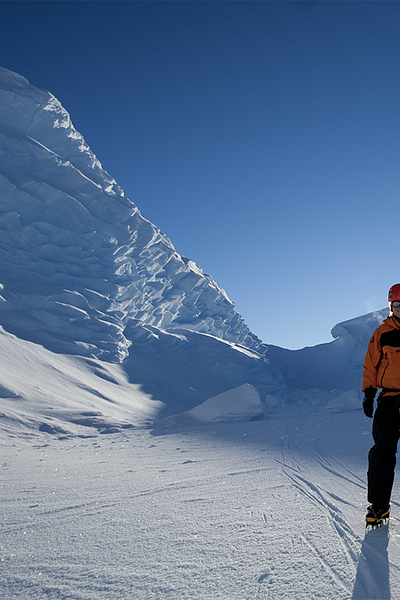
By (this will open in a new window)Emma Philpott, Head of Mobile Connectivity at FarrPoint
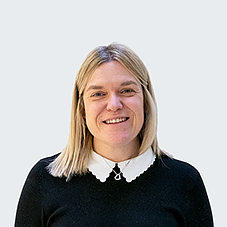
I can honestly say I never planned a career in telecoms or digital connectivity. My passion was always science at school, and I followed that path to university doing a degree in Oceanography and Chemistry. I was then lucky enough to hear about the Mountbatten Program, which sponsored young professionals like me to live, work and study in New York City for a year to kickstart your career. I ended up making lots of coffee and running errands for senior executives, but it gave time to think about what type what really interested me.
So, when I returned to the UK, I applied for a graduate job with a global engineering consultancy organisation. The position I applied for was within their environmental division. To this day, I’m still not sure how my CV ended up with the digital communications team or what made them invite me for an interview. I had zero experience or qualifications in telecoms. I remember, as part of my assessment, having to do a presentation on the migration from analogue to digital TV and thinking that there was no way I would get the job. However, I did. It was the start of my career in telecoms which has taken me to places around the world, helping to deploy mobile infrastructure and improve connectivity to some of the most remote places on the planet.
My career path then led me to working for the (this will open in a new window)British Antarctic Survey as a communication manager. It involved around six months of training before being deployed full-time to (this will open in a new window)Halley Research station on the Brunt Ice Shelf.
I remember being completely overwhelmed by the training schedule, which covered all the communication systems I would have to manage, operate and maintain on the station. These included VSAT, Iridium, Inmarsat satellite systems, as well as VHF and HF radios and antenna and numerous IT systems and servers.
Emma launching a weather balloon with a radiosonde attached which records the pressure, temperature and humidity as it climbs and transmits the data back to Halley via UHF radio which Emma would then process and sent back to the Met Office in the UK.
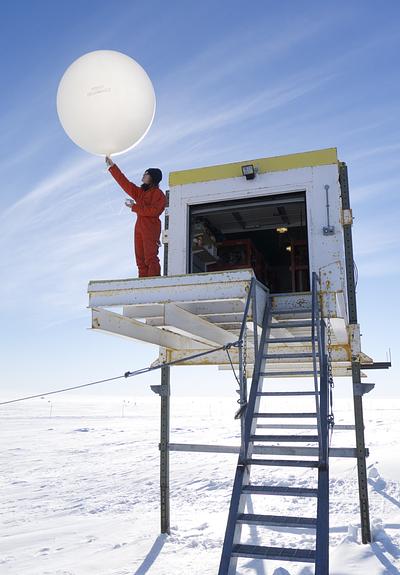
I also had to attend courses on tower climbing, marine communications and air traffic management courses covering Air-Ground and Ship-to-Shore operations and learn how to operate other scientific equipment. This included the Dobson spectrophotometer used to measure atmospheric ozone, and meteorology training on how to programme the radio sondes, launch weather balloons and process the data they recorded, all of which had to be sent back to the MET office in the UK to help them predict weather and monitor climate change.
Finally, my preparation for going South also included field training on how to put up pyramid tents, polar camping techniques, ropes skills, and climbing as basic first aid.
Then finally, in October 2010, after an intense six months of preparing, I was finally ready to depart into the unknown. My journey South was via a commercial flight from London to Cape Town. Then I flew on the Ilyushin cargo plane to Novolazarevskaya , where I then picked up a feeder flight to Halley Research Station.
I can remember my first few weeks at Halley feeling completely lost both in terms of my job and surroundings. For a start, Halley is located on the Brunt Ice Shelf, and so it was just vast white emptiness in every direction with no trees, plants or mountains for reference. Apart from the other scientists and operational support personnel, there were no other people around. Most other research stations in Antarctica are hundreds of miles apart, so the only daily interactions I had were with those people with me at Halley.
Emma digging out the Automatic Weather Station (AWS) which had been buried with a years worth of snow accumulation.
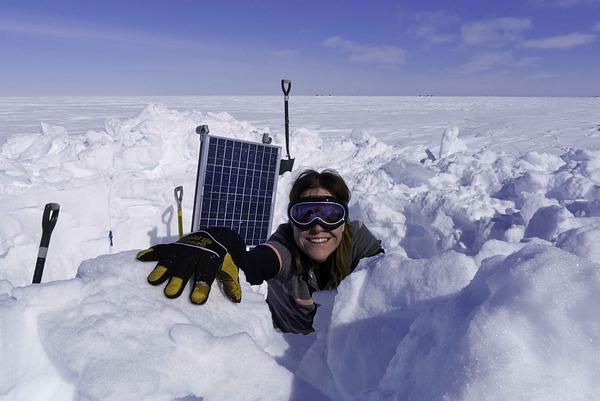
That made communications at the station hugely important, not just for keeping in contact with the field scientists, pilots and personnel around the base but also for getting the scientific data back to the UK so that people on the station could maintain contact with their friends and families back home. In previous eras, those who went South were simply given a 200-word limit once a month via telex to their one nominated contact; however, our main link back to the outside world was via a 256Kbps satellite link. It sounds so insignificant in today’s world of gigabit connections, but it was a lifeline to us and allowed phone calls back home as well as email.
I had many highs and lows while living on the ice. People often think it's hugely exciting and heroic, but in reality it was often very mundane. Large parts of each week were taken up with general housekeeping jobs like cleaning or digging snow each day which we needed for cooking and drinking as the water was rationed on the base.
There were many highs though, including fixing the HF antenna when it fell down in a storm, getting chased by penguins, spending time out in the field living in a pyramid tent and experiencing the true meaning of a ‘white out’, abseiling down a crevasse, and helping to co-pilot a Twin Otter.
Emma with a group of penguins.
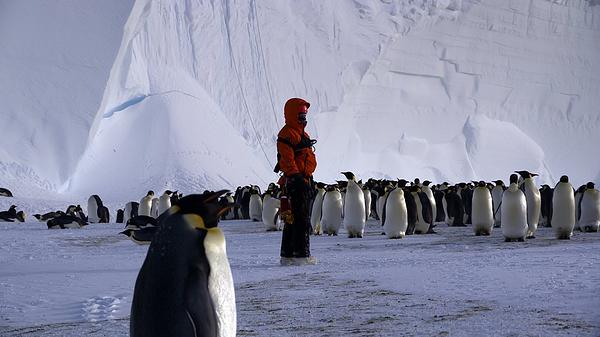
However, it was during the winter months when the continent was truly unpredictable with ice, howling winds, and nothing but complete darkness that I started to realise that humans are not designed to live in Antarctica long term. It’s an incredibly weird feeling stepping outside when the temperatures hit minus 50, and you can actually start to feel your own lungs freeze with each breath you take!
That said, during the winter months, I truly got to appreciate the continent and had some of my most memorable experiences. It was almost supernatural being stood on the ice shelf in total darkness, hearing it crack as it moved beneath my feet and having my first moment of seeing the Aurora Australis. I never realised until going South, but the brighter the aurora, the faster they move, and, on some occasions, they moved pretty quickly. Finally, the best part of winter for me was seeing my first sunrise over the horizon after spending so long living in the dark.
My time spent in Antarctica wasn’t just a trip – it was my home for fourteen months (and also where I met my now husband!). I feel incredibly humbled and honoured to have been able to see what is, unarguably, the most inaccessible, pristine, and captivating part of the world.
However, it was only when I returned to the UK that I realised how isolating and vulnerable an existence it had been living on an ice shelf. It was then that I started to think about my own career path and just how few female role models I had throughout it, and how it is still a challenge at times to work in a male-dominated industry.
One example I always remember after arriving at Halley was that none of the winter boots or socks would fit me – over the years, polar clothing was only designed to fit men who generally don’t have size 4 feet.
There have also been other more significant challenges during my career in telecoms. I’ve had moments where someone has felt the need to dismiss my ideas in a meeting but then accepted the same idea when presented by a male colleague. I have been to conferences and people have assumed my male colleague I am attending with is the more senior person. I’ve also been paid significantly less than my male counterparts for doing the same job.
However, I am lucky that none of these barriers have ever put me off pursuing my career, and I am thankful that things are much better and equal at FarrPoint, the company I now work for as the Head of Mobile. I am able to continue to make a difference by improving connectivity through my consultancy work, advising clients such as the Welsh and Scottish Governments or DCMS.
Overall, I think things are very different now for women than when I started my career. However, more work can be done to ensure that certain careers like telecoms are not viewed as something girls do not or cannot do. I believe this should start as early as possible in education, encouraging girls into STEM subjects. It also means having female role models for girls in jobs which they can look up to, which is something I missed out on.
I’d also like to see more organisers think about the gender balance of their keynote speakers or panel discussions at conferences which still doesn’t always happen at the technical events I regularly attend.
Overall though, I am proud to be part of changing the culture of how women are seen in telecoms and encouraging girls in the future to consider a career in the industry or even a winter in Antarctica.
We are always interested in speaking with good people who would like to pursue a career at FarrPoint, visit our careers page or drop us an email with your CV to [email protected].
Connectivity is important. It drives business and society, bringing communities and commerce together. That's why we use our insight and experience to connect people and business.